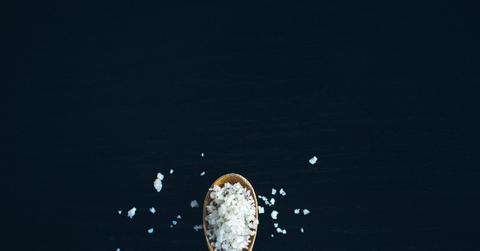What Is so Special About Celtic Sea Salt? The Health Trend Everyone's Talking About
Updated Jan. 9 2024, 3:35 p.m. ET

Celtic Sea salt is an alternative salt option that has become a well-known health trend. Anyone can make their food more savory with options besides table salt, but it’s important to know what each type of salt does for your health to make an informed decision. Celtic salt has many benefits for anyone willing to try the ocean-sourced seasoning.
You might consider optimizing your health by replacing table or Himalayan salt with this Celtic alternative. You’ll gain nutritional boosts to help you reach your wellness goals. Keep reading for some of the benefits you may start experiencing if you add Celtic salt to your daily diet — just make sure to consult with your doctor before making any major dietary changes.

What is Celtic Sea salt?
Celtic sea salt is derived from evaporated ocean water. It’s a white or cream-colored substance similar in texture to pink Himalayan salt. However, according to peer-reviewed research from Foods, Himalayan salt comes from rock veins in the Himalayas, Peru, or Australia.
There are many benefits to consuming Celtic salt.
Sea salt has numerous minerals and nutrients because ocean water is full of life. Specifically, plankton species create nutrients to support the ecosystem, as researched by Frontiers in Marine Science experts. The nutrients benefit humans when the water evaporates and condenses into Celtic salt.

Your body will absorb water more efficiently with the magnesium in sea salt. The natural salt also contains nutrients like zinc, as found in research published in the journal Toxics. You might recognize zinc as one of the foundational nutrients in fish, but you can also get it from Celtic sea salt.
If you’re among the many people trying to stay hydrated, increased water retention is one of the Celtic salt benefits that may interest you. Researchers with the Journal of Food Engineering found that sea salt has a higher moisture content, which makes it more effective at retaining nutrients than processed salt. You’ll get slightly more hydration in your daily routine by swapping dry table or Himalayan salt for this sea-sourced alternative.

How much Celtic salt should you eat per day?
Celtic salt contains sodium like any other type of salt. Leading health organizations recommend between 2.3-5.8 grams of salt daily, according to a study published in the journal Nutrients. It’s best to stick with that guidance for your Celtic salt intake or the advice provided by your primary care provider. You’ll maintain a healthier blood pressure by preventing your salt intake from becoming too high.
There are numerous ways to add this salt to more of your diet if you’d like. Add it to a glass of water to create a hydrating beverage. You could also mix it into meals, or make healthy homemade snacks like crackers topped with plant-based cheese and Celtic sea salt.
Is Celtic salt bad for you in any way?
As long as you don’t go over the sodium recommendations of your primary care provider or leading health experts, you’ll enjoy more savory food without negatively affecting your health.
This article, originally published on Dec. 5, 2023, has been updated.